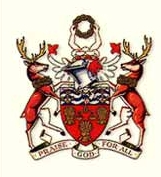
Q: Which organization, whose motto is now "Praise God for All", once played an influential role in getting certain goods to be sold in quantities that are multiples of a rather awkward prime number?
A: The Worshipful Company of Bakers, once called the Baker's Guild. This London guild was responsible for enforcing the regulations for baking known as the Assize of Bread and Ale, which were put into law during the reign of Henry the Third around 1266 or 1267. Since this statute threatened harsh punishments for bakers who sold short-weight bread, bakers added a thirteenth loaf to each dozen, just to be safe. This led to the term "baker's dozen" for the number thirteen.
According to the Wikipedia, the baker's dozen remained popular because it is efficient to bake cookies or buns in these patterns on a cookie sheet:
However, an observant reader will note that the second supposedly efficient packing is not really all that efficient. The same cookie sheet is could actually hold 5 + 4 + 5 = 14 cookies of the same size! However, the 4 + 5 + 4 arrangement shown above has the advantage of keeping cookies away from the corners, where they tend to burn. The Wikipedia claims that this 4 + 5 + 4 arrangement "would have been discovered empirically by bakers with the goal of baking the maximum number per batch with optimal uniformity".
Given that anyone can write articles in the Wikipedia, one should probably check with actual bakers to see what they say about these issues. If you find out, let me know - do any bakers still use a baker's dozen?
Sources:
For more fun try these: